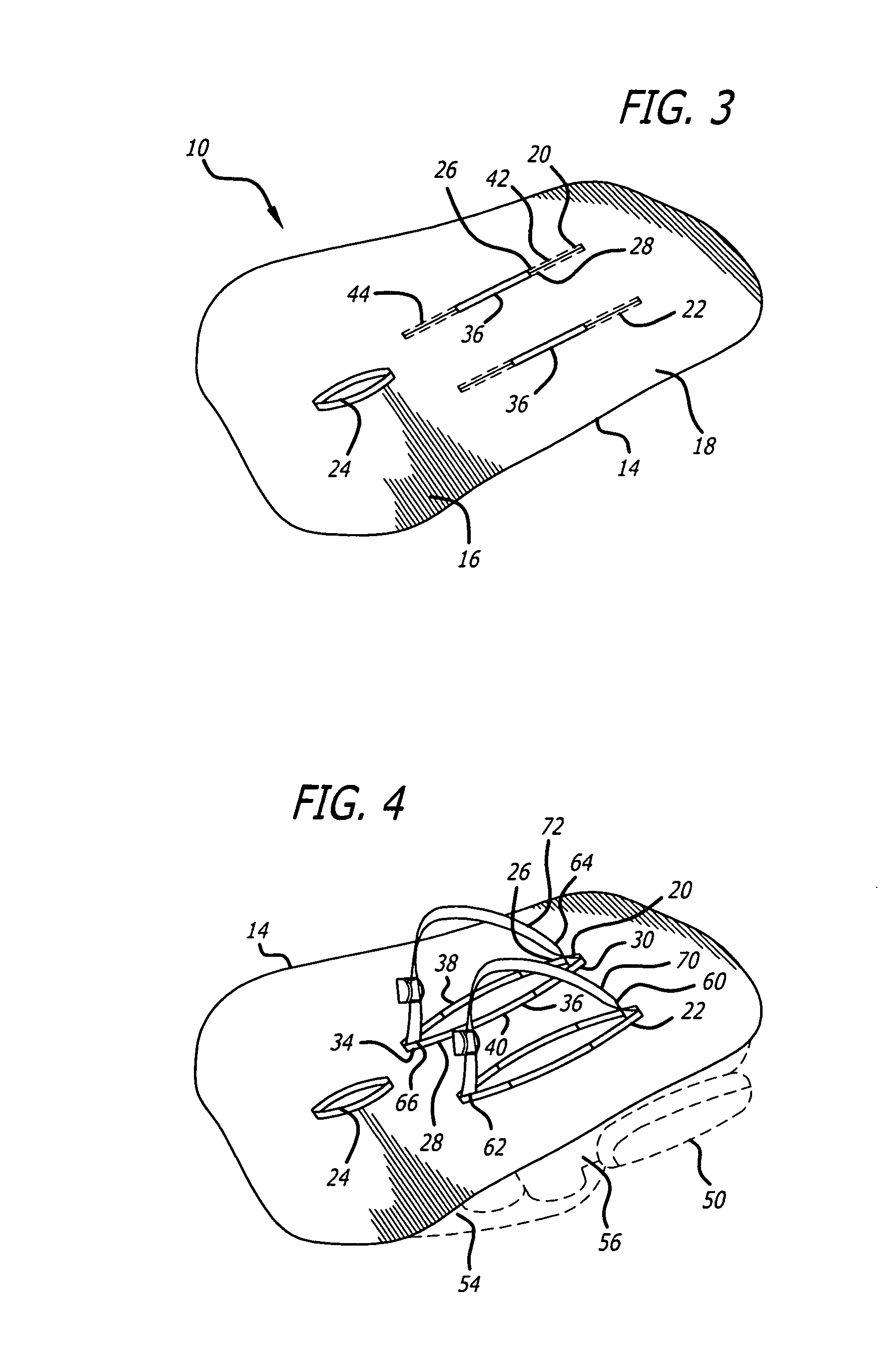Cover for infant/child seat
a technology for infant/child seats and covers, which is applied in the field of covers for infant/child seats, can solve the problems of compromising the effectiveness of infant/child seats and their safety, requiring frequent washing and cleaning, and often becoming dirty, etc., and achieves the effect of relatively rapid installation, removal and/or replacemen
- Summary
- Abstract
- Description
- Claims
- Application Information
AI Technical Summary
Benefits of technology
Problems solved by technology
Method used
Image
Examples
Embodiment Construction
[0032]Referring now to the drawings, and particularly FIG. 1 thereof, there is shown a seat cover 10 of the invention. The seat cover 10 comprises a cover section 12 which has a peripheral edge 14 which may be elasticized so that it can easily fasten or engage in a releasable manner to the infant / child seat. The cover section 12 has generally two areas, namely a seat area 16 and a back area 18 which, respectively, cover the seat and the back of the infant / child seat. Two approximately parallel lateral slots 20 and 22 are formed within the back area 18 and a single slot 24 is formed in the seat area 16.
[0033]Each lateral slot 20 and 22 has a pair of edges 26 and 28 and each edge 26 and 28 has an upper section 30, a middle section 32, and a lower section 34. Along the middle section 32 of each edge 26 and 28, there is formed a fastening mechanism 36. The fastening mechanism 36 comprises a first Velcro™ strip 38 on the edge 26 and a corresponding second Velcro™ strip 40 along the edge ...
PUM
 Login to View More
Login to View More Abstract
Description
Claims
Application Information
 Login to View More
Login to View More - R&D
- Intellectual Property
- Life Sciences
- Materials
- Tech Scout
- Unparalleled Data Quality
- Higher Quality Content
- 60% Fewer Hallucinations
Browse by: Latest US Patents, China's latest patents, Technical Efficacy Thesaurus, Application Domain, Technology Topic, Popular Technical Reports.
© 2025 PatSnap. All rights reserved.Legal|Privacy policy|Modern Slavery Act Transparency Statement|Sitemap|About US| Contact US: help@patsnap.com



